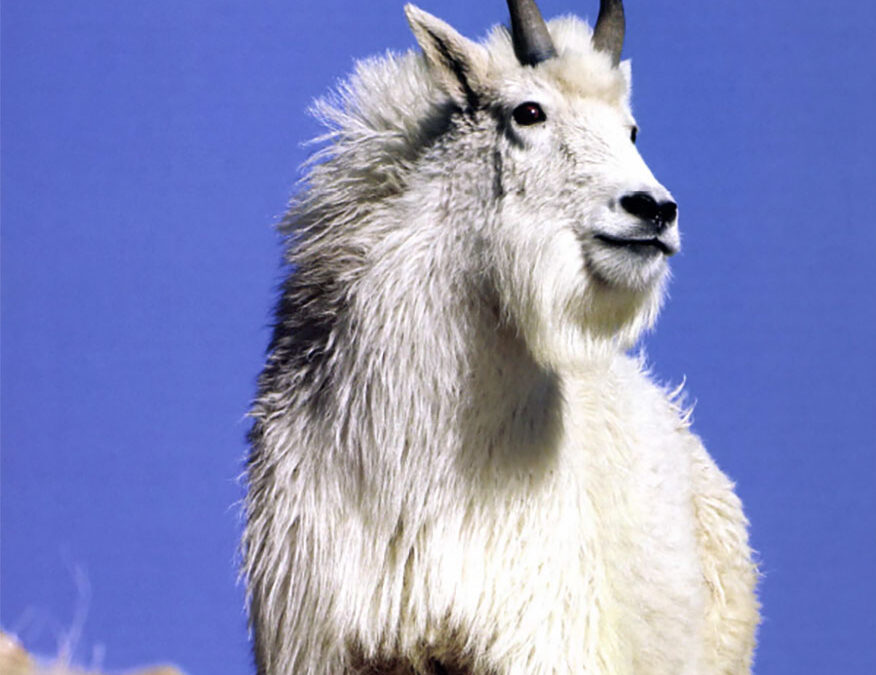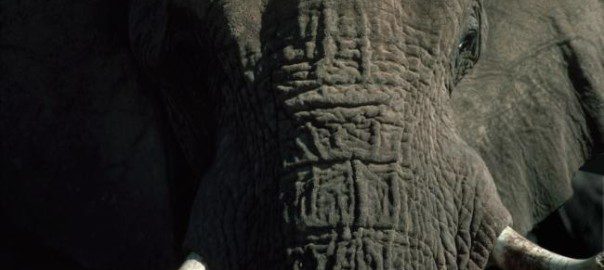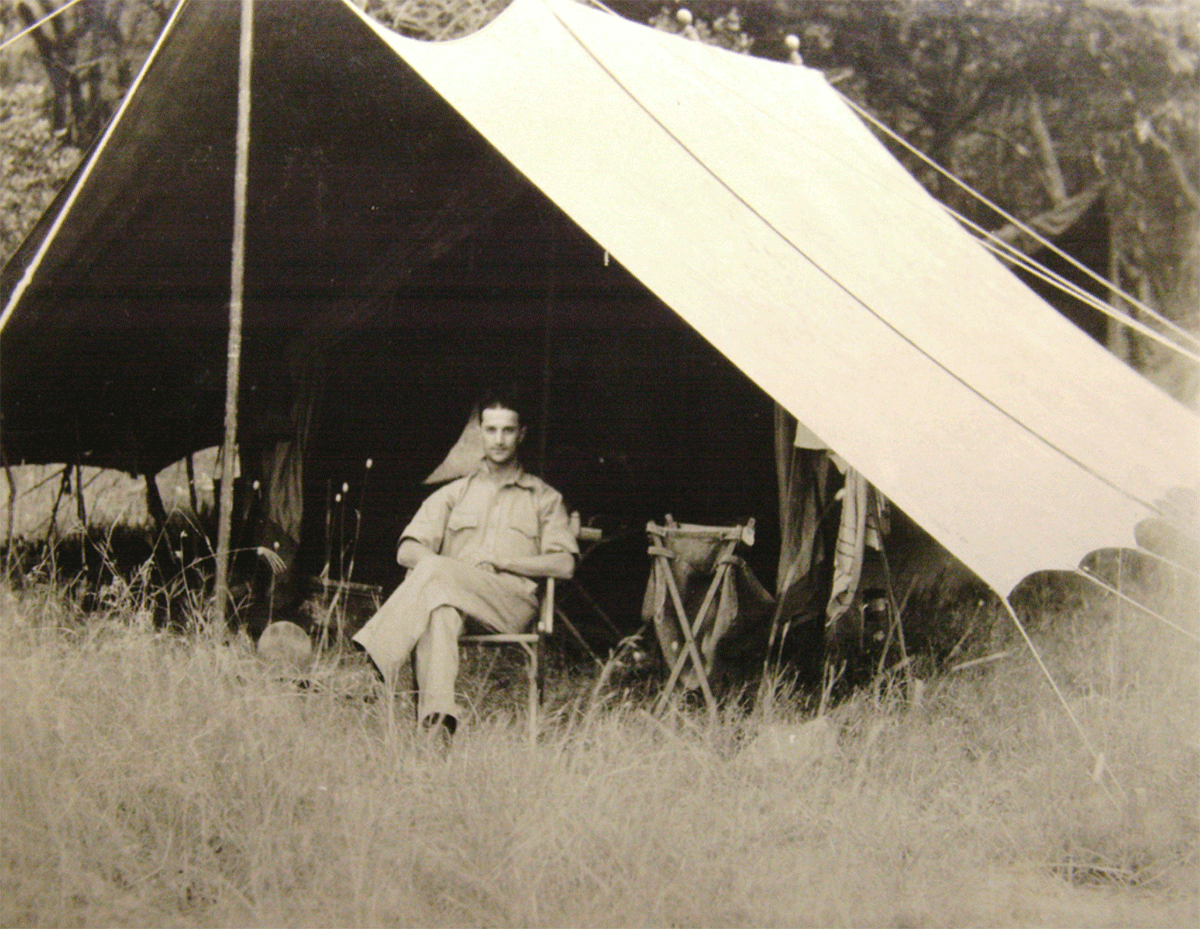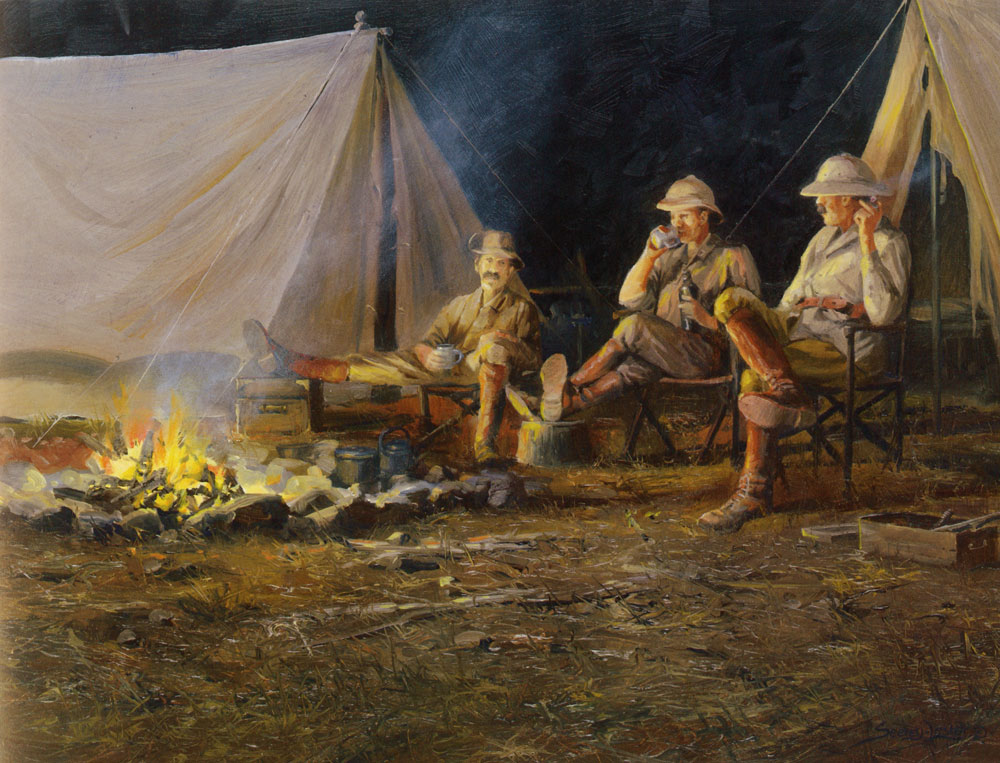This was the billy I had been looking for all summer and fall — my whole life, really. . .I’d found the animal I wanted, and would push myself to any limit to get him.
The Rocky Mountains are a vast stretch of peaks that are young by geologic measure and by any other measure still raw and wild. The men who first journeyed here were the toughest of the tough: adventurers, explorers and trappers who plied the wilderness and hard-rock miners who lusted for gold. Strangely and by wild coincidence, I crossed paths with one of these men at a very critical moment in a hunt for a mountain goat. Although the explorer was long gone, his efforts from more than a century ago prevented efforts from turning disastrous.
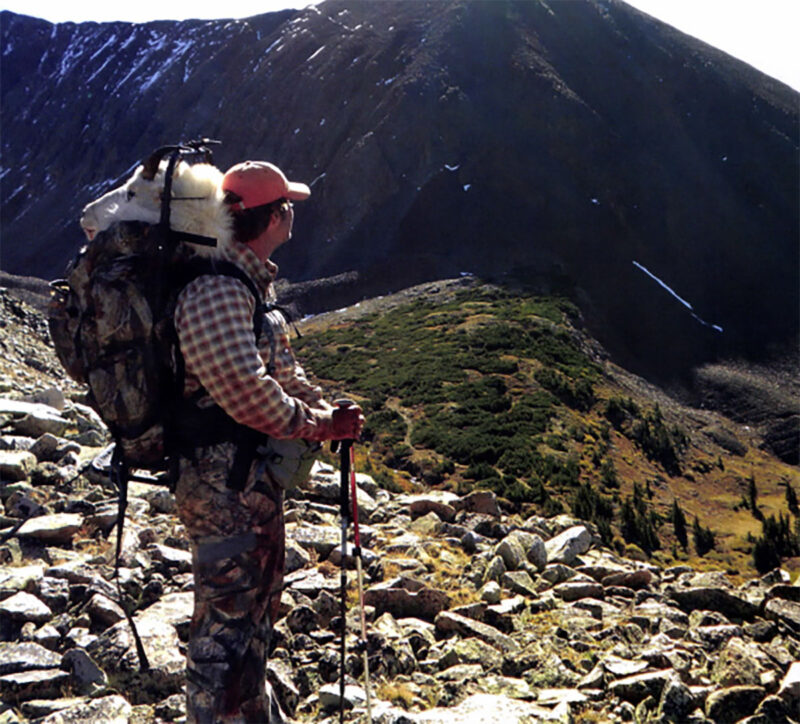
The business of packing out meat slows down as the author surveys the vast, desolate and beautiful wilderness where his grand mountain goat adventure had unfolded.
Similar to the early explorers, wild goats are legendary — and for good reason. The nannies, kids and young billies live among the crabby grass and dwarf, wind-beaten trees in the transitions from sheep to goat country, but the big billies live among barren rock and the desolate, high-altitude peaks where the air is thin. The reclusive old ogres live mostly alone but occasionally in groups of two or three and in some of the most beautiful places on earth. Every aspect of hunting them is hard.
I first saw a mountain goat deep in the Colorado wilderness while scouting for elk Across a mile-wide chasm, I noticed a single white speck moving up a rockface that appeared to be only a degree or two short of vertical. Through a spotting scope, I watched the goat stroll steadily up and over the top. Such an ascent by a seasoned mountaineer with technical gear would have required a full day and good weather. But on that cold and drizzly morning the goat needed less than ten minutes. At that point, I’d never hunted goats, had never even been drawn for a tag, though I’d been trying for years.
Considering where they live, the difficulty of hunting them and that they wear one of the most luxurious snow-white coats on earth, why isn’t a big billy the world’s top trophy? The only reasonable answer is that they are not crowned with 40 inches of spiraled horns and lack the dashing good looks of a stud ram. The greatest goat ever will sport arched spikes not much bigger than a $10 cigar. The trophy in a big billy is not the size of his horns, but the strength in his heart.
After nearly a lifetime of waiting, I finally drew a tag for mountain goat in my home state of Colorado. In preparation for the hunt, I scouted all summer and by early autumn had covered countless miles in search of a really big billy. I saw plenty of goats, but no gnarly old males worthy of that precious tag. The realization hit me that I needed to scout harder and hunt deeper into areas I had not looked into before, areas so rugged I wasn’t sure I could penetrate without climbing gear. Still, I somehow knew the hunt would lead me to one of these remote and hidden spots.
Two days before the hunt I heard that a family of five had been killed in a rockslide 40 miles from where I had scouted. The news hit me hard because I planned to hunt alone. In this country, the area above timberline is generally unstable and steep. Combined with rain, the loose scree in the high country can be very dangerous. Hunting in the mountain always has an element of risk, but the rewards can be great as well.
The day before the hunt I drove in as far as I could, then took to walking a high ridge. Far below me, the valleys were insane with fall color. It was a good day to be alive and a great way to begin a two-week chase.
The next morning, in the still black before sunrise, my small stove hissed and spit while heating some coffee. I had spent an hour hiking in the dark to a vantage point where I could scan the mountains that loomed around me. Any step beyond this point would carry me farther than anywhere I’d scouted.
The coffee burned bitter sweet and the chill from the sweat I’d worked up had me shivering. The blush on the eastern horizon and the blacks of the night surrendering to shape and form told me my wait was almost over. I said a prayer and my hunt was on.
I scoped several vantage points, and at midday I saw two goats bedded just below the top of a 13,500-foot peak. They rested miles from where I stood — a distance that made judging their sizes difficult. Still, I could see their blocky bulk and horse-like heads and knew that a goat or two without kids in this kind of country was likely a billy. I moved on to another area conducive to glassing but drew a blank. I decided to check on the goats I had spotted earlier and arrived just in time to see a white speck moving downhill through a series of slate-colored crags into a secluded valley.
I cinched the backpack and began a two-hour hike to the distant drainage toward the goats. I arrived at the foot of a mile-long amphitheater of crumbling stone and flint-edged cliffs that looked like classic big-goat heaven. The north-facing, dark side of the valley featured loose-rock ridges that funneled down through massive stone fingers. It also was a dead-zone, void of any foliage and so steep that ten months out of the year the sun never touches it.
But wandering through the far end on this dark side was a lone goat — it just had to be a billy. If he kept moving, he would soon reach the cliffs beyond the valley and be impossible to follow. I needed a break and got one: He bedded down on a stack of stone at the head of the basin.
He had picked a good vantage point, but I could see enough play in the land to make a stalk and keep hidden as long as he stayed put. In the belly of the valley, I found and used a small lake surrounded by scrub trees. Moving through the low brush, I bumped a big covey of ptarmigan that exploded around me, curling and cutting and sailing back down-valley, their winter white flickering in the blue sky. It was a stunningly beautiful sight that I took as a good omen.
Past the lake, the basin opened and I looked for any available cover while banging elbows and knees on the sharp rocks in an effort to stay low and out of sight. Moving painstakingly closer to the goat, I took a breather and glassed high on the sunny side of the valley and noticed a hidden fold, which cradled a small patch of grass and in it, three white spots that had to be goats. At first glance, I thought I was looking at a nanny and two kids, but through my scope I discerned three males. Focusing on the biggest billy, I heard myself mutter, “Whoa . . . that’s a big one.”
Part of my preparation for this trip included a study to help me judge the size of goats in the distance, but this billy was half bigger than his buddies. When the brute got up, I was in awe as the wind rippled his winter coat. His massive shoulders gave him a bulky, cartoonish hulk as he moved in a lumbering stroll. The smaller billies looked up from their feeding and moved away, giving the big boy a wide berth.
This was the billy I had been looking for all summer and fall — my whole life, really. I quickly forgot the goat at the end of the basin. I’d found the animal I wanted, and would push myself to any limit to get him.

The author with his big billy, one of three he spied on a distant ledge.
Planning strategy, I figured it would take me about an hour to get into shooting range — and I could only hope they stayed on that small ledge. Just about any location is a bad place to shoot a billy, but a shot that fails to drop a goat in its tracks precedes a tumbling death crash that quickly turns a trophy into a mangled mess. The small ledge they occupied would be perfect if I could drop him where he stood.
I moved upward toward the goats, but the stalk took more time and was more difficult than I originally figured. The steep grade and loose footing forced me to use my hands as much as my feet, and I felt like I was crawling up a slide of granite baseballs and busted bricks. The slope and great altitude took their tolls with each step and breath. It took almost two hours to get where I wanted, and worst of all, cold dark shadows had begun replacing the beautiful fall day. When I crawled into position to see the goats, I saw only the ledge. Either the ever-changing winds pushed my scent their way or they had simply wandered on. They could have gone unseen over the rock ridge several hundred yards farther up, but beyond that was a jagged nastiness of straight up and down.
Staying focused and breathing deeply, I kept moving forward but had no place to hide. I saw a patch of white, then a head, then the backs of running goats. Soon the goats would be impossible to follow, and the sun would drop over the horizon. I was running out of terrain and time. I knew I had to reach into my reserves and move up faster to get a shot.
With an all-out effort, I covered about 300 yards to get within shooting range of the far side of the ledge. One of the billies paused and looked back, giving me a shot but I waited — something told me the big billy would come back and to see what caused all the excitement. Sure enough, he did. The image of him above me on that windy ridge will be with me forever.
Adrenaline filled my blood, but my heart and lungs burned. Above 12,000 feet and light-headed, I looked down the barrel at the shot of a lifetime. I did my best to put the puzzle back together, knowing he wouldn’t linger more than a few seconds.
At the crack of my rifle, a hard thwack whip-snapped through the clear air and he dropped hard. I saw his head and hump rise, however, as he disappeared toward the disaster of cliffs beyond the ridge.
He had been quartering toward me and either I had center-punched him and he was dead on his feet or had broken a shoulder. None of it would matter if he made it into those cliffs.
In a hobbling run across a pyramid of watermelon- and grapefruit-size boulders, I caught a glimpse of him at 100 yards, making his way to the edge. On shaky legs and with a heaving chest, I could barely keep him in the scope. I had a moment before he would be gone and instinctively snapped an offhand shot. The bullet walloped him hard, and he hurtled downhill, hooves spinning like a windmill as he accelerated over the crest of the rim and out of sight.
The excitement of the moment had turned nauseating. I felt certain I’d find only a hairy wad of hamburger at the bottom of the cliff. But at the edge above the abyss, I saw a tuft of white hair a hundred yards below. More than a century earlier, a hard-rock miner had cut a gash no more than two yards wide into the mountainside. The billy fell into it dead perfect. If he had dropped two feet to the left or right, he would have surely tumbled 1,500 feet all the way to the bottom.
There are truly certain magic moments that burn deep in a hunter’s soul, and this was one of them. Kneeling next to him, I ran my hands through his magnificent coat and sensed his wildness with awe. One of his horns had been chipped, but he was in great shape, even after crashing down the near-vertical slope.
I found out later that without the missing tip, his thick curved black daggers might have made Boone and Crockett. It really didn’t matter, as this hunt is one of my all-time best life experiences, and that’s not a reading on a tape measure.
Note: While finishing this story, I received grim news of a solo Colorado hunter who fell to his death while packing out his goat of a lifetime. His name was Ted Leach, and although we never met, I feel a kindred spirit and would like to dedicate this story to him.
MEMORABILIA: My first hunt for mountain goat and the memories from it will always be special. In addition to killing the billy and the great adventure, I came away with a couple “artifacts” that will help me recall those days in the Colorado wilderness.
First, when I clambered down the cliff to claim the goat, I found a rusty tin can. The goat had fallen into a gash dug out of the mountainside more than a century ago by a miner, and I imagine that the can had belonged to him. Someone had hacked into the can with a knife and likely ate cold beans from it. I would have liked to have met that man, who probably wandered this remote area dreaming of riches.
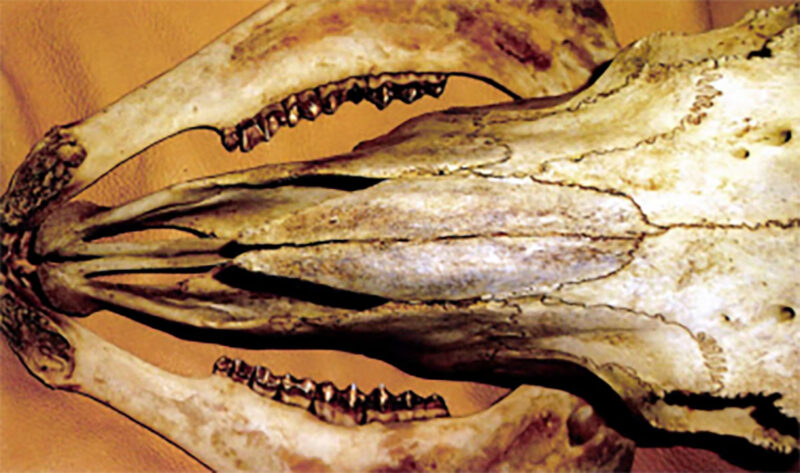
The goat’s golden teeth might be a product of a reaction between its saliva and mountain knotweed.
And when I got home, I boiled out the goat’s skull, which is normally thoughtless, greasy work, but something stopped me. This goat’s mouth gave me a feeling of peeking into King Tut’s tomb, because its teeth appeared to be plated with gold. I’m not talking about tan stains but a plating that looked like polished gold. I dug into the mystery and learned that, although uncommon, the combination of old age and enzymes in a goat’s mouth can react with mountain knotweed to coat its teeth with a golden luster. —Ted Schnack
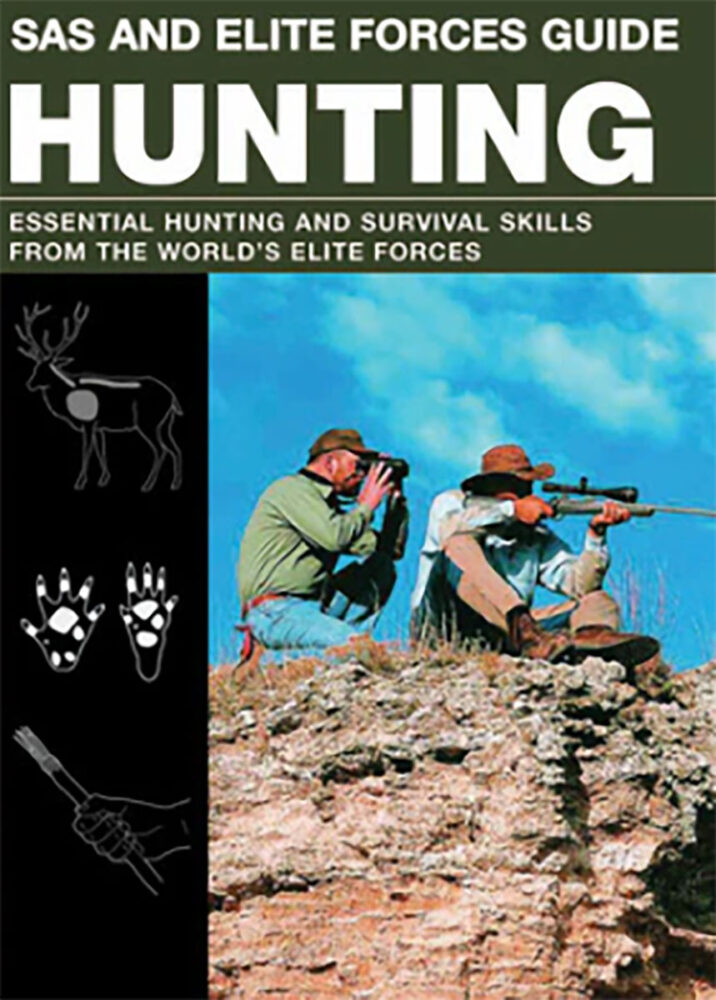 Essential Hunting And Survival Skills From The World’s Elite Forces:
Essential Hunting And Survival Skills From The World’s Elite Forces:
Elite Forces Handbook of Hunting and Shooting demonstrates the core skills involved in being a self-reliant hunter. Includes detailed illustrations from tracking large game to shooting wild pheasant, this book is the essential guide to finding, killing and surviving off animals in the wild. Buy Now

